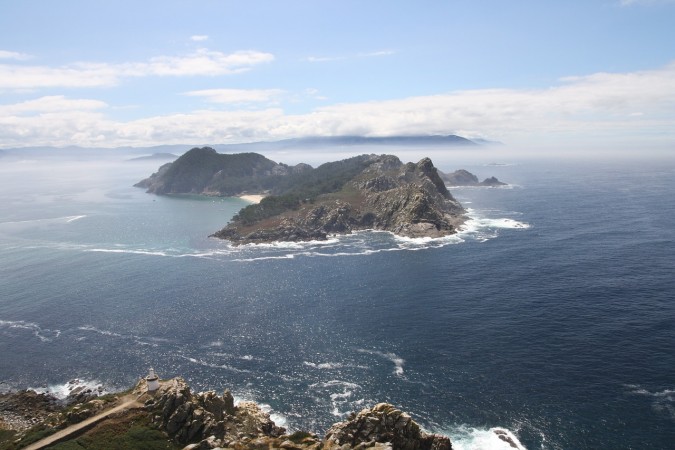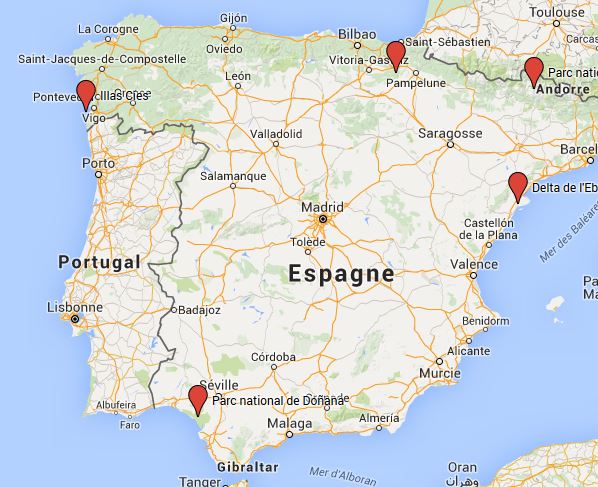Ecotourism and sustainable holidays in Spain
 Spain is a great destination for an eco-friendly holiday, thanks to its parks, its eco-friendly accommodation promoting renewable energy, and its big cities such as Barcelona or Madrid, which are making a real effort to protect the environment, with sustainable means of transports and services. Madrid for example has the most green zones among all European cities. The European Charter for Sustainable Tourism lists 144 protected areas in 17 countries, 42 of these protected areas are in Spain. Entrance to the Spanish Natural Parks and Nature areas is regulated and the focus is to protect the environment.
Spain is a great destination for an eco-friendly holiday, thanks to its parks, its eco-friendly accommodation promoting renewable energy, and its big cities such as Barcelona or Madrid, which are making a real effort to protect the environment, with sustainable means of transports and services. Madrid for example has the most green zones among all European cities. The European Charter for Sustainable Tourism lists 144 protected areas in 17 countries, 42 of these protected areas are in Spain. Entrance to the Spanish Natural Parks and Nature areas is regulated and the focus is to protect the environment.
See the list of protected areas here.
5 eco-friendly destinations in Spain, and unspoilt treasures not to be missed
The Cíes Islands are located on Spain North West Coast and are known as the Galician Caribbean. The archipelago consists of three islands, Monteagudo (or North Island), Do Faro (The lighthouse Island), and San Martiño (the South Island). It has been a nature reserve since 1980 and the islands are part of the Atlantic Islands of Galicia National Park. It is the ideal place for hiking and birdwatching, but refrain from picking up shells or flowers as it is a protected area. No bikes or cars are allowed. And no hotels, just a campsite. You can access the islands of Monteagudo and Do Faro by ferry and the island of San Martiño can only be accessed by private boat (a permit is required). There are only 2,200 visitors allowed per day so it is advisable to book your seat.
The Nature Reserve Delta Del Ebro is a birdwatcher’s paradise with more than 300 species, including pink flamingos. It is the second largest wetland in the Mediterranean with large lakes of sea water and fresh water, long beaches and dunes. Activities in the Nature Reserve include canoeing, horse riding, hiking and cycling and there are tours organized where you can find out more about the fauna, flora, and the economy of the area.
The Aigüestortes i Estany de Sant Maurici National Park in the Pyrenees Mountains has been a National Park since 1955 and is the only park located in Catalonia. You will see the Pyrenean chamois, Roe deers, marmots, ermines, Golden eagles and Black woodpeckers. The valley Vall de Boi is a UNESCO world heritage site with its 9 churches from the 11th and 12th century, it is the largest concentration of Romanesque art in a rural area in Europe.
Doñana National Park in Andalusia, between the provinces of Huelva and Seville, and on the right corner bank of the Guadalquivir River, is a UNESCO heritage site. It is a birdwatcher’s paradise. The site is where more than half a million fowls spend their winter and home to about 500 threatened bird species. But it is also home to the Iberian lynx and the Spanish Imperial eagle. There are guided tours organized so you can find out more about the fauna and flora.
The Urbasa-Andía Natural Park is beech kingdom with its extensive beech forest, meadowlands, beautiful turquoise streams and waterfalls. It is an ideal place to go hiking and to have a picnic in the meadows, surrounded by wild horses and cattle. They do limit the number of visitors during the day so it is advisable to book a parking place on their website.

Our selection of sustainable and eco-friendly activities to enjoy in Spain
Walking, horse riding and cycling are definitely the best ways to combine a holiday with environmentally friendly activities. There are routes that are suited for the whole family, where you will get to meet the wildlife and learn about the environment, the different species of trees and much more. The Sierra Nevada is well known for its skiing but it is also a UNESCO Biosphere reserve, which is home to the Eurasian Eagle-owl, Wild Boar, Badgers and a thriving population of Iberian Ibex. And if you are passionate about bears, then head to the Somiedo Natural Park to find out more about the Cantabrian Brown Bear. By visiting those areas, you are also supporting the economy of the region and allowing people to carry on protecting a precious environment.
Camping or sleeping in Tree houses and choosing eco-friendly accommodation is another to support people who are making preserving the environment a priority. Many campsites in Spain have bungalows or cabins where you can spend your eco-friendly holiday. But sleeping in tree houses or yurts adds to the experience. The website Bungalowsclub.com has a wide range of eco-friendly accommodation. You can select the ones that are promoting renewable energy in their services section.
Find and book your eco-friendly accommodation here.
Another positive about choosing an eco-destination such as Spain when travelling with your family, is that you give the opportunity to your children to discover a different environment and to learn about ways to preserve it. It is also gratifying to know that you are supporting rural areas and their future.
Image Credits: Pixabay


